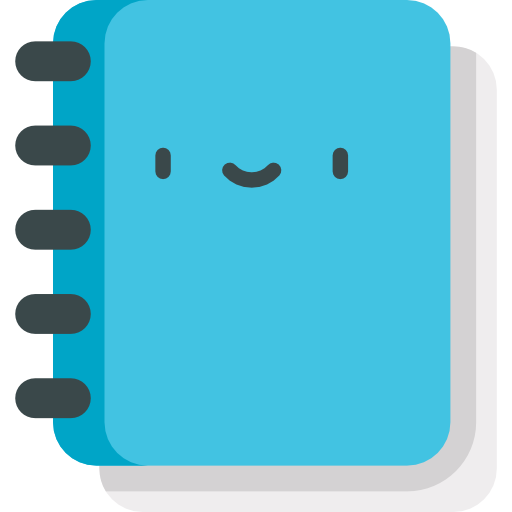Revision Difference
Custom_Asset_Types#545858
<cat>Code.Misc</cat>
<title>Custom Asset Types</title>
Custom assets are things you can define yourself. They give you a nice inspector window and they're hotloaded in-game, which means you can whip things up pretty quickly if you're using them.
⤶
# Creating a custom asset type⤶
⤶
Let's say you wanted your own custom weapon asset type. Here's how you'd do that.⤶
⤶
## Creating the FGD⤶
⤶
Make a folder in your addon's root directory, call it `config`. Make a file in there called `weapon.asset`.⤶
The file name you choose here will be the name for the base class and the extension for any files of this type.⤶
⤶
Writing the FGD here is similar to [how you'd write an FGD normally](https://developer.valvesoftware.com/wiki/FGD).⤶
⤶
You can find plenty of examples of assets throughout s&box, here's a snippet from the clothing asset:⤶
```
@BaseClass = weapon : "A weapon"⤶
[⤶
Name(string) : "Name" : "Weapon Name"⤶
Description(string) : "Description" : "This is my weapon."⤶
Damage(float) : "Damage" : "5"⤶
]⤶
```⤶
⤶
When writing these, give your fields some sane default values to make it easier on yourself.⤶
⤶
You can obviously do a lot more than this - you could define all of the possible parameters here - but we'll keep things simple for now.⤶
⤶
## Mirroring it in code⤶
⤶
You then need to mirror this class in code. Make sure you specify the same defaults that you specify in the FGD.⤶
⤶
```⤶
[Library( "weapon" )]⤶
public class WeaponData : Asset⤶
[Library( "clothing" ), AutoGenerate]⤶
public partial class Clothing : Asset⤶
{
// Data from weapon.asset⤶
public string Name { get; set; } = "Weapon Name";
public string Description { get; set; } = "This is my weapon.";⤶
public float Damage { get; set; } = 5.0f;
[Property]⤶
public string Title { get; set; }
⤶
[Property, ResourceType( "vmdl" )]⤶
public string Model { get; set; }
⤶
// ...⤶
}
```
⤶
<warning>⤶
If you don't specify defaults in code, then they won't be assigned to at all - regardless of whether these are set up in the FGD.⤶
</warning>⤶
⤶
## Using the inspector⤶
⤶
⤶
* `[Library( "clothing" )]` specifies the file extension our assets use will be .clothing⤶
* Because we specified `[AutoGenerate]` on our asset class a .asset file will automatically generate for us.⤶
* Properties that should be editable via the inspector in your asset should be marked with `[Property]`⤶
⤶
⤶
## Using the inspector⤶
Now that you have everything set up, you can use the inspector tool to edit your first weapon.
1. Click the "Inspector" icon in the asset browser.
<upload src="44a6e/8d941a81d2276f1.png" size="36799" name="image.png" />
2. Pick your asset type.
<upload src="44a6e/8d941a921ee5812.png" size="15315" name="image.png" />
3. Set up your weapon however you want.
<upload src="44a6e/8d941a8a3d0efee.png" size="9916" name="image.png" />
4. Save your asset into your addon's config directory - call it "MyWeapon.weapon"
## Loading the asset type⤶
⤶
Loading an asset type is super easy.⤶
## Accessing assets⤶
⤶
All assets are loaded when you first start the game, there are several ways you can access them:⤶
⤶
### FromPath⤶
⤶
When assets are loaded they are stored in a dictionary with their path, you can access these with `Resource.FromPath<T>`.⤶
```
// Property allows for hot-loading
public WeaponData WeaponData { get; set; }
public Clothing Clothing { get; set; }
// ...
// Load the weapon data from a path
WeaponData = Resource.FromPath<WeaponData>( "config/MyWeapon.weapon" );
Clothing = Resource.FromPath<Clothing>( "config/tshirt.clothing" );
```
⤶
Congrats, you can now get your weapon's data using the WeaponData object you just created.⤶
For example:⤶
⤶
```⤶
Log.Info( WeaponData.Name );⤶
Log.Info( WeaponData.Description );
Log.Info( WeaponData.Damage );⤶
⤶
// Output:
// Cool Weapon⤶
// This is my cool gun⤶
// 69⤶
⤶
### PostLoad⤶
⤶
When assets are loaded they call their PostLoad method, you can use this to store a list of your assets for later use.⤶
⤶
```csharp⤶
public partial class Clothing : Asset⤶
{
// Access these statically with Clothing.All⤶
public static IReadOnlyList<Clothing> All => _all;
internal static List<Clothing> _all = new();⤶
⤶
protected override void PostLoad()⤶
{⤶
base.PostLoad();⤶
⤶
if ( !_all.Contains( this ) )⤶
_all.Add( this );⤶
}⤶
}⤶
```
⤶
You can edit these values in the inspector and they'll apply in-game as soon as you hit save with no extra work required.
 Garry's Mod
Garry's Mod
 Rust
Rust
 Steamworks
Steamworks
 Wiki Help
Wiki Help
 S&box
S&box